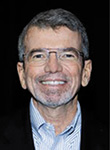by Paul B. Thornton

A team is a small group of people who are committed to working together to achieve the desired goals. Members of the team work together by sharing ideas, debating issues, collaborating and establishing goals, making decisions, and dealing with conflicts. Doing all of these things at a high level requires a strong alignment and commitment from all team members.
High Performing Retail (HPR) Teams have five things in common:
- Shared goals
- Shared values
- An effective team leader
- The right people
- Effective and efficient processes
Shared Goals
The goals, whether sales volume, customer service satisfaction scores, or average transaction amount must be clearly defined, accepted, and supported by all team members. Shared purpose and goals provide the reason for collaboration. A clear, compelling purpose gives people a reason to commit to the team and desired outcome.
In addition to shared team goals, performance goals are established for each team member. Proper alignment means team members see clear connections between their individual goals and the overall team goals.
Shared Values
Five values that exist on HPR teams include:
- Excellence: Maintain high standards; strive for perfection; be the best.
- Continuous improvement.
- Respect: Members exhibit a genuine respect for their colleagues’ ideas and insights.
- Openness: Members are curious and open to new and better ways of doing things.
- Trust: Team members trust colleagues to do their work, say what they think, and provide guidance and support when needed.
An Effective Team Leader
The team leader plays a major role in the success of any team. The best team leaders work with their team from the inside and evaluate the team objectively from the outside. Working within the team requires effective task skills and people skills. Task Skills include the ability to set goals, establish priorities, assign roles and responsibilities, plan and run effective meetings, and monitor results. People Skills include the ability to build relationships, connect with people, resolve conflicts, motivate, and celebrate success.
To evaluate and improve the team objectively, leaders also need diagnostic skills. The best team leaders have the ability to determine:
- What individual members (or the whole team) are thinking and feeling?
- What changes are required regarding team members’ roles and responsibilities?
- Which values and operating rules need to be strengthened?
- What team members need to be replaced?
- What does the team need to perform at a higher level?
Working with the team and on the team are both essential to creating HPR teams.
The Right People
HPR teams have the right people on the bus and they get the wrong people off the bus. Individuals easily influence the morale and motivation of the group, so it is extremely important all team members are equally dedicated and competent.
Team members should meet the following criteria:
- They have the knowledge and skills to excel at performing their assigned role.
- They support and embrace the team’s goals, values, and operating rules.
- They are highly motivated and committed to the team’s success.
- They are committed to supporting and helping each other.
Effective and Efficient Processes
Effective means you are focused on the right things. Efficient means no waste. HPR teams don’t waste their time and energy. Specifically, they are very effective and efficient at the following:
Interpersonal Processes—these include communicating, listening, resolving conflicts, providing feedback, and encouraging others. Consultant Alden Davis states, “The soft skills are critical, especially those for resolving conflict. Unresolved conflicts hold teams back and slows down the work.”
Task Processes—these include roles and responsibilities, deadlines, decisions, measuring performance and holding people accountable. Consultant Michael Vann states, “High Performing teams have a strong emphasis on accountability. When you hold people accountable it motivates them to maximize their potential.”
Tips to Remember:
- It starts with shared goals and values.
- An effective team leader works both with the team and on the team.
- You can’t achieve greatness without talented people.

